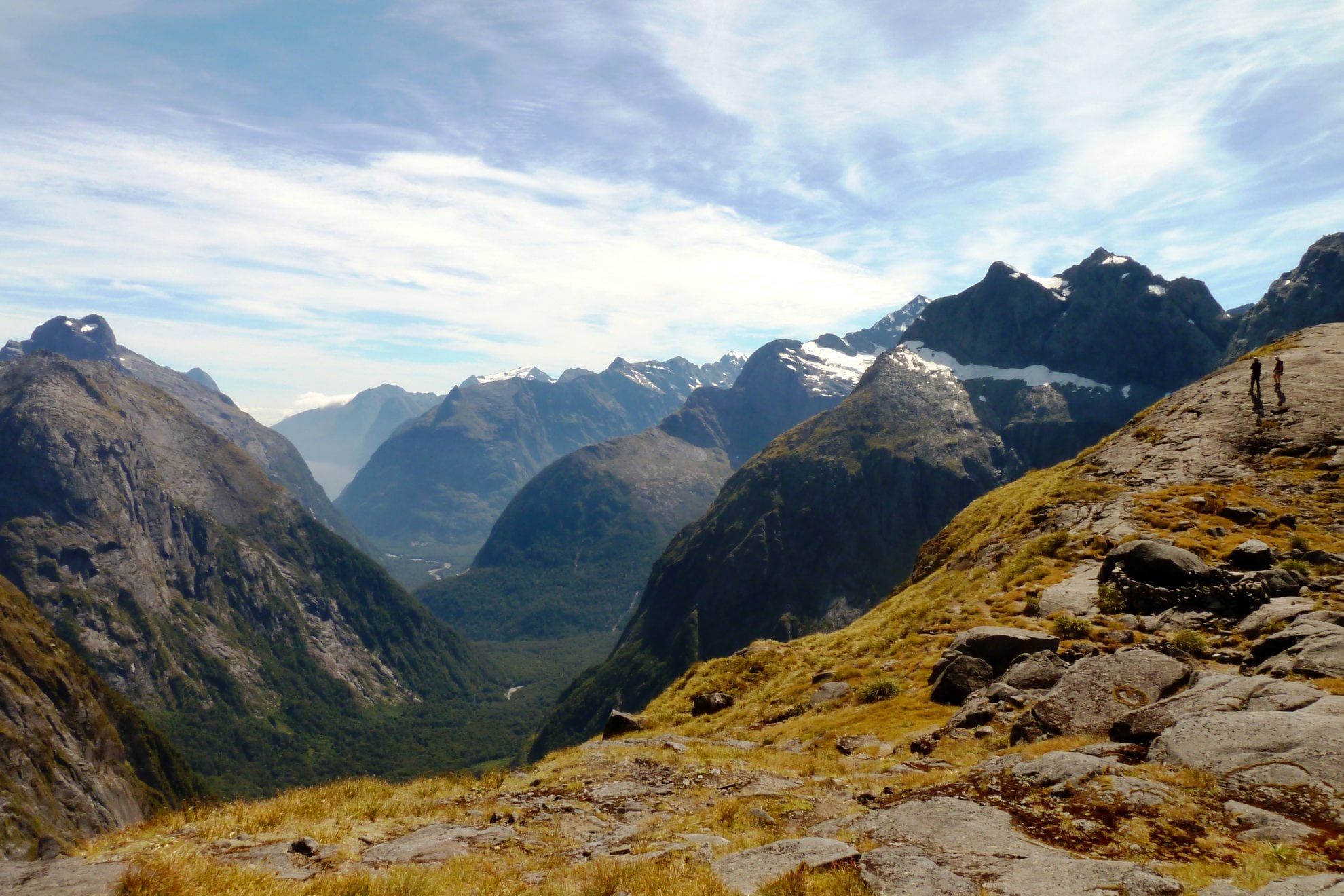The death of a tourist who fell on the Gertrude Saddle route in Fiordland may have been prevented if DOC had not delayed installing warning signs, according to the coroner.
Two people died less than a year apart in very similar circumstances on the popular tramping track, near the Homer Tunnel.
Both trampers missed a crucial stream crossing on their descent from the saddle and continued down steep and unsafe terrain before falling down a cliff near a waterfall.
Coroner Marcus Elliott has now found that DOC did not act quickly enough to put signs in place marking the correct crossing point following the first death in 2016.
“If DOC had taken this step, [Anne-Marie] Scaglione-Genet may not have died,” the coroner’s report said.
DOC said it acknowledged it could have acted more quickly and, had it done so, the death may have been prevented.
Both trampers were well equipped and experienced.
Udy Brill, an Israeli national, was on holiday in New Zealand with his wife and had been tramping in Tongariro, Abel Tasman and Mt Aspiring national parks.
On March 8, the 31-year-old was walking alone on the route – his wife had stayed with the couple’s campervan in the car park. She later raised the alarm when he did not return and police found his body in a pool at the foot of a waterfall later that night.
Police and the Mountain Safety Council later surmised that Brill had missed the critical turning point on his descent which led to him falling on steep, slippery terrain.
Sergeant Ted Hollebon said many trampers went the wrong way while descending from the saddle as a track had been worn due to the number of people missing the creek crossing. This led to slippery rocks above steep bluffs.
Tramping guide Andrew Pealng was interviewed by police also said there needed to be signs put in place marking the route on the descent from the saddle.
“The stream crossing is a definite decision point… To be safe, you have to cross here,” Pealing said.
The Mountain Safety Council also recommended additional markings be put in place to mark the stream crossing.
DOC also found further signage was required, but it failed to install markers before Scaglione-Genet’s death 10 months later. It said markers had been ordered by November 2016, however, it missed the ‘pre-Christmas installation window’ and the markers weren’t installed.
Scaglione-Genet was visiting New Zealand from France with her partner and had been tramping around the world, including in Nepal and climbing Mt Kilimanjaro, and throughout the North and South Island.
The couple started the Gertrude Saddle route on January 10. They had a map and were experienced at route-finding and successfully reached the top of the saddle. However, Scaglione-Genet’s partner, Pierre Genet, said they missed the creek crossing on the way down. Genet said he realised they had gone too far – then he heard his partner scream.
“He turned around and ‘saw her like in a sitting position, sliding down, not especially fast,” the coroner’s report said. “‘I thought she was going to stop’. He figured that she had possibly stood on a slippery patch and lost her footing. Mrs Scaglione-Genet then went over the edge of a waterfall.”
Genet headed to the foot of the waterfall where he found his partner still breathing, but with a major head injury. She died a short while later.
DOC investigated both deaths. While doing a site visit, DOC staff saw another tourist had missed the turn-off and was heading towards the dangerous terrain, but released their error and returned to the correct route.
By September 2017, the department had installed directional markers, including above the waterfall, and additional signs at the start of the track and changed its promotional material about the track to highlight the risks.
But the coroner said DOC should have acted in 2016, after Brill’s death.
“In my view, DOC should have taken this step in the period following Mr Brill’s death. These markers should have been in place before Mrs Scaglione-Genet fell and died 10 months later.”
This article was originally published on the Wilderness magazine website.

